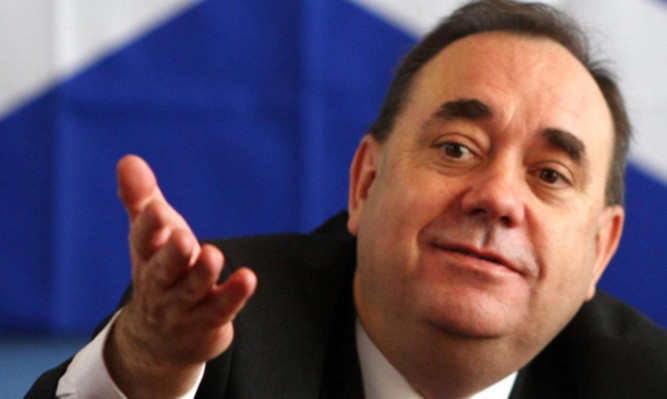Alex Salmond has insisted his “plan A” of keeping the pound if Scotland votes for independence will win agreement from the UK Government.
The First Minister hinted that without a deal on the UK’s “assets” in the wake of a yes vote in next year’s referendum, the Scottish Government could refuse to accept a share of UK debts.
He argued that an independent Scotland would be “entitled to share of the assets of the United Kingdom at least if they want us to accept a share of the liabilities of the United Kingdom”.
Chancellor George Osborne has already said it is “unlikely” that the rest of the UK would agree for Scotland to keep the pound in a formal currency union if the country did vote to leave the UK.
But in a speech in the Isle of Man which uses its own currency, the Manx pound, as well as sterling the SNP leader said: “An independent Scotland will retain the pound and we will use our sovereignty to negotiate a formal currency union with the rest of the UK.
“Cooperation and agreement would be required but the things we would need to agree on would often be straightforward for example, in relation to limits of budget deficits.”
On Wednesday, the First Minister insisted that establishing a formal currency union would be “best” for the rest of the UK if Scotland voted for independence.
When asked if adopting a similar approach to that used on the Isle of Man could be a plan B, Mr Salmond said: “No. We will rest on plan A and plan A will work for a range of reasons.”
